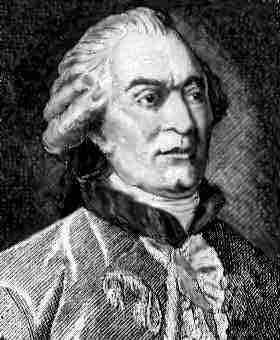
Buffon, born George-Louis LeClerc (the name Buffon was inherited with an from his mother when he was twenty-five), was born in Montbard, France, the son of a Burgundian state official, and attended the Jesuit College of Godrans in Dijon. In 1723 he followed his father's advice and began to study law, but in 1728 he went to Angers to study mathematics, medicine, and botany. In the early 1730s, Buffon traveled with his friend, the Duke of Kingston, and during their stay in England, Buffon was elected a member of the Royal Society.
Shortly thereafter he was recalled to France, where he pursued research in probability and botany, and published translations of Stephen Hales's Vegetable Staticks (1735) and Isaac Newton's Fluxions (1740).
Buffon was appointed keeper of the French Jardin du Roi (now the Jardin des Plantes) in 1739, an impressive royal post for someone only thirty-two years old. His patron, J.-F.-P. de Maurepas, then commissioned him to catalogue all the royal collections of natural history.
The reslut, the Histoire naturelle, générale et particulière, began to appear in 1749, when the first three volumes of Buffon's general views were published. The next twelve on quadrupeds appeared between 1753 and 1767, and then more on birds and minerals between 1781 and 1786. The most famous section on geological periods, the Époques de la nature, appeared in 1778. Buffon died before completing his great work; the Conte de Lacépède, one of his students, finished the work with eight more volumes on serpents and fishes between 1788 and 1804. The work was widely translated and read throughout Europe.
Buffon's work was always controversial: philosophers, scientists, and theologians found much to criticize in his works and their broader intellectual implications; some accused him of impiety. But on the whole he was widely regarded, and on the strength of the early volumes of his Natural History, Buffon was elected to the French Academy, where he delivered his famous Discours sur le style, which contains his most famous saying: "Le style c'est l'homme même" ("The style is the man himself"). His fame was considerable: he was named treasurer to the Academy of Sciences, and frequented the salons of Diderot and d'Alembert, although he was never at the center of the philosophes movement. He was created a count by Louis XV in 1773. Toward the end of his life, he was often visited by Mme Necker, wife of the French Minister of Finance, Jacques Necker, to whom he made a declaration on his deathbed that he was a devout Christian.